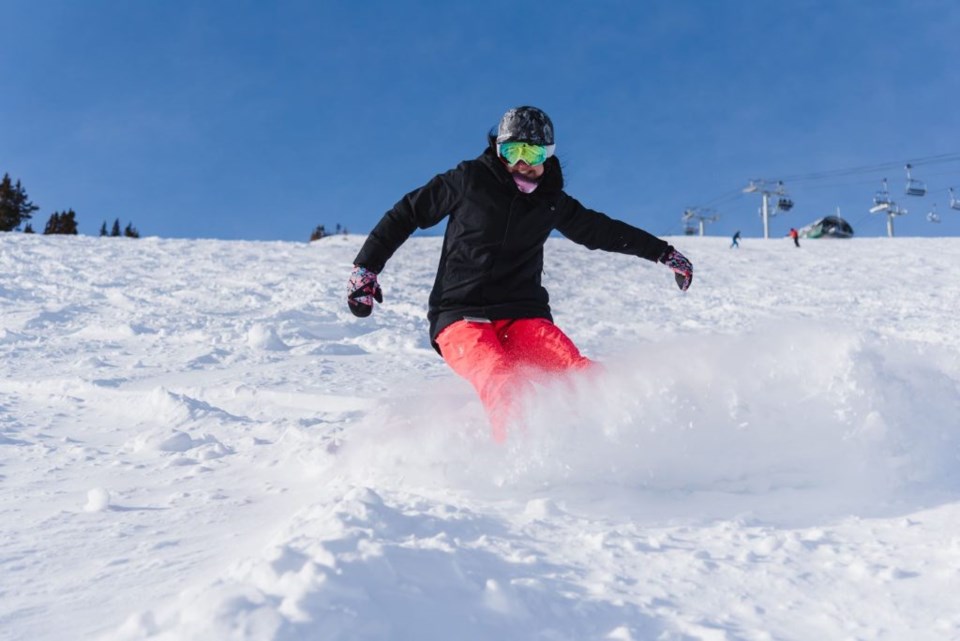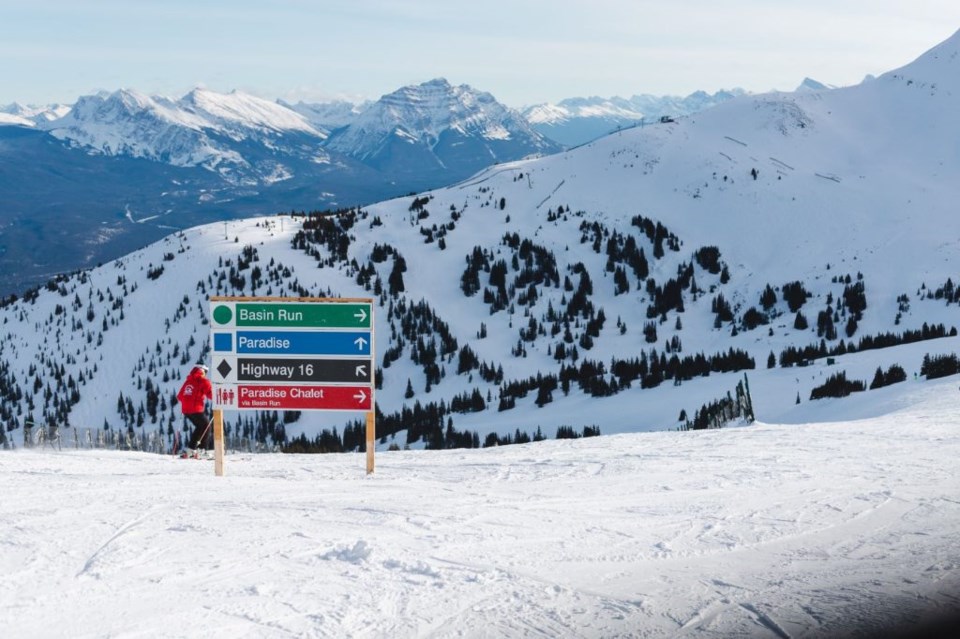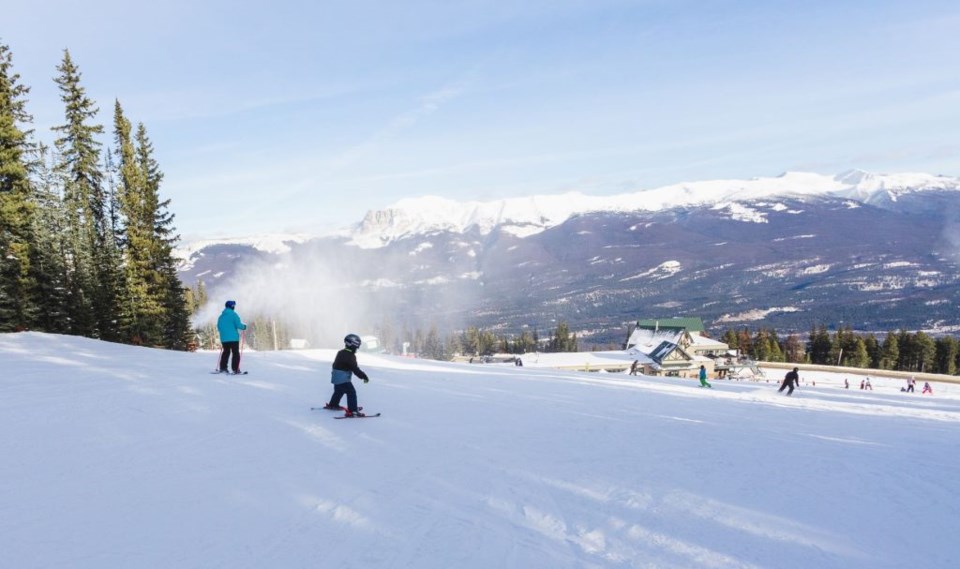
Joanne McQuarrie, Local Journalism Initiative Reporter | [email protected]
A huge dump of snow at Marmot Basin kicked off this year’s Jasper in January and staff are continuously monitoring conditions as well as keeping up with COVID protocols.
Lasting until Jan. 31, Jasper in January includes virtual and private events at the ski resort along with deals on lift tickets.
Although COVID-19 has altered the format of the festival and the overall operations of Marmot Basin, staff say the recent snowfall has proven to be a significant boon.
“The recent snowfall has been fantastic - we've had 29 centimetres in the last two days - and conditions are absolutely superb,” said Alyssa Golbeck, active content producer, said in an email on Jan. 14. “I can personally attest to the fact that there is still tons of powder and there is some really great skiing up here right now.”
Although Saturdays and weekends aren’t as busy as last year, there is a steady flow of skiers from Monday to Friday. With that pace, staff are managing COVID protocols with the visitors.
“Business has been good,” said Brian Rode, vice president. “We are now seeing quite a few people who haven’t been to Marmot for a number of years or who haven’t skied for a number of years. Right now, we’ve had more skiers visit this year than last year.”
He attributed these numbers to Albertans staying closer to home and the warmer weather.
Chalets run at 15 per cent capacity, and Rode said people have been patient and complying with health restrictions.
“Outside, people wear masks and naturally spread out when they’re skiing,” he said.
Upon arriving to work, staff must sign in and declare they have not come to work with symptoms.
“All of our supervisors are talking with and monitoring the staff. Our staff body is healthy,” Rode said, noting staff have a personal responsibility to monitor their health.
Golbeck said the avalanche team has been hard at work the past few days, and staff were able to open much of the upper mountain on Jan. 14.
Rode said Marmot Basin’s safety team monitors conditions regularly “to ensure all of the runs are safe to ski, without any risk of avalanches occurring.”
“To do that, they’ve got patrols in place,” he said.

The team makes sure the main runs are ready to use first thing in the morning, then the higher runs are tackled later. Factors to monitor include the amount of snowfall, wind, temperature and moisture content.
“All of these affect the type of snowpack we have,” Rode said, adding any runs with an avalanche risk are kept closed until the ski patrol team checks the conditions.
They do ski cutting, or “traversing the slope” as Rode called it.
“Without fail, they do it in such a way so you can traverse from point to another,” he said. “They ski across the slope. That knocks the air out of it. They start at the top at a safe point - a rock outcrop (for example) - and ski across to the other side. That will give them a good sense of what that slope is like.”
That measure sometimes releases the snow without having to use explosive charges.
For slopes higher in the alpine region, explosive charges are thrown in and detonated, which knocks the risky snow down.
“All slope angles are charted on every single run - 91 of them - some long and (some) short,” Rode said. “Below the treeline, the runs are risk-free of avalanches. The slopes above the treeline, where there’s a risk of avalanches, if the slope doesn’t avalanche, they’ll continue to monitor it, looking for trigger points.”
Slopes are only opened once staff determine them as safe.
While the scenery may be beautiful, Rode noted boundaries are in place for a reason.
“If people stick to runs that are open and don’t go into areas that are closed, they’re safe,” Rode said.
With avalanche control, there are temporary closures, but there are other areas around the mountain, outside the ski area boundaries, that are permanently closed.
“We don’t patrol those areas,” Rode said. “Some areas are closed because they’re caribou closures. It’s illegal to be in that area.”
Rode warned the public not to duck under any ropes or enter these closed areas.
“Not only are you putting yourself in danger and the ski patrol team in danger, you’ve established a trail that other people may follow,” he added.
Rode said people went outside the boundaries twice this year so far.
“We sent a ski patrol in,” he said. “They knew where (they) were going, and that they’d have difficulty going through a particular area.”
Wearing snowshoes themselves, the team brought in a pair of snowshoes for the wanderer to wear out.
“Often, a person will report to ski patrol that one of their buddies ducked under,” Rode said. “That’s typically what happens. Invariably, we can determine where they’ve gone.”
Rode recalled there have been incidents where it’s dark before people get back to safety, such as one incident a few years ago where an individual didn’t get out until the following day.
Marmot Basin is also posting a series of videos about avalanche safety at the hill this week, which can be viewed on its Facebook page.




